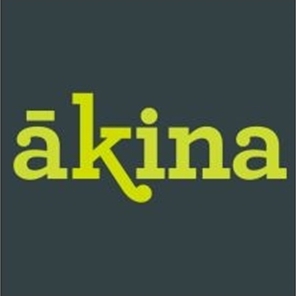One NZ extends Satellite Txt coverage to prepay customers

One New Zealand customers on prepaid plans can now use the company’s Satellite TXT service. Previously, Satellite TXT, which launched shortly before Christmas 2024, was only available to customers on business plans and consumer pay monthly accounts.
Initially the service will be free. One NZ says it is operation a free trial for a limited time. After than prepaid customers will pay an additional $5 a month to retain coverage.
Not everyone will be able to use Satellite TXT. The service still only supports a limited range of recent handsets, although that has now extended to 23 eligible models.
One NZ says customers use Satellite TXT to send, on average, more than 10,000 messages each day. The company also says the service has been improved in the three months since it first launched with messages being sent and received “within minutes”.
Primo builds underground fibre network in Egmont Village
Primo is building a community fibre network in Egmont Village, a small settlement in Taranaki. The build has already achieved the kind of high uptake that is common in areas covered by the government-supported UFB fibre network.
Although Primo is a smaller, independent, regional internet service provider, it manages to offer Egmont Villagers affordable pricing in line with subscriptions paid by city dwellers.
The company has worked with the community on a DIY approach that questions some assumptions made elsewhere and challenges national trends in fibre deployment and pricing.
Matthew Harrison, who founded Primo, says the company completed phase 2 of its Egmont Village project earlier this year: “We have now passed 185 rural addresses and homes. So far we have achieved a 75 percent uptake and hope this level of uptake will continue as we move to phase 3.”
This next phase will cover a further 45 addresses and homes. It doesn’t stop there. Harrison says he is planning a fourth phase which will extend coverage to a further 40 homes.

Backhaul down the State Highway
To get traffic out of the local network to the internet backbone, Primo worked with Spark’s wholesale team to access the company’s transport cable which runs along State Highway 3.
“This has given us the ability to have multiple 10G waves, or when needed we can even have 100G back to the New Plymouth Exchange. From there we can handover to our core network or, perhaps in the future, we can handover to other networks.”
Harrison says he would welcome new wholesale partners to join the project, a move which would allow Primo to grow its network further.
Rural, not remote
Egmont village sits between New Plymouth and Inglewood. Harrison says it is around 15 minutes from New Plymouth by car and a 5mins drive to Inglewood.
Both Inglewood and New Plymouth have UFB fibre supplied by Tuatahi First Fibre. There is fibre at the village school, which is provided by Chorus and Network for Learning.

Primo founder Matthew Harrison working the trencher.
Going underground
Primo worked with a local drilling firm, Subterrain Drilling, to keep the majority of the network underground.
It’s an investment Harrison was willing to make. “I didn’t want to have any future issues by deploying anything aerial, as I believe if we are deploying this kind of network, we should be ensuring the asset has as long life as possible.
“Some of the installations to homes I have done myself using my tractor and trencher, working with the local lifestyle and farming customers to get them connected for as cheaply as possible, ensuring no one is left behind.”
Rural fibre, city prices
Harrison says prices for fibre plans in the village are in line with UFB prices, and, at present, are a little cheaper. “If you make the price too high, which is the direction current UFB pricing is going, it will drive people to look for cheaper alternatives such as fixed wireless access or Starlink.
“Keeping the pricing affordable ensures a good uptake rate and keeps customers connected to fibre. The other LFC’s need to understand that raising the pricing of UFB every year has a detriment to the industry because customers are willing to take on an inferior technology to fibre just to save some dollars.”
Prices on Primo’s fibre network start at $60 a month for a 100/20 mbps connection. A 500/100 mbps connection costs $89 and FibreMax is available at $109. Harrison says the majority of customers have opted for the $60 and $89 plans.
I’m keen to hear from other smaller service providers like Primo to learn how other communities are connecting. Please get in touch.
Kordia gains top-tier Fortinet partner status
Kordia is now an Expert-level partner in Fortinet’s Engage Partner Programme — the highest tier available. The status recognises Kordia’s certified expertise in deploying secure SD-WAN and cybersecurity solutions across New Zealand.
See: Kordia warns of rising AI cyber security threat from last month.
Ericsson launches wireless-first network for branch sites
Ericsson says its wireless-first branch architecture will help businesses manage their connectivity as technologies like 5G Advanced and generative AI take off.
The architecture is built around the company’s Cradlepoint E400 which combines routing with security. It supports 5G, WiFi 7 and satellite links.
There are also new Lan switches and access points. These work with NetCloud Manager, which provides a single interface allowing users to centrally control the enterprise network.
In other news...
Dryad
Networks taps Spark to deliver IOT-based, ultra-early
wildfire detection
At Reseller News Rob
O’Neill says Spark will act as both a systems integrator
and a reseller for Dryad Networks.
NZ’s
Broadcasting Act is as old as Video
Ezy
There’s lots to unpack in this post at
The Conversation by four Massey University academics which
contains some good ideas.
Auckland’s
smart traffic signs cut congestion, promote public transport
use
A story I wrote for the NZ Herald’s
Project Auckland report. Thanks to fibre everywhere and
near-blanket 5G coverage, the city has an advanced digital
nervous system. This is about one of the ways it can be put
to work to give Aucklanders a better quality of
life.
The Download Weekly is supported by Chorus New Zealand.
One NZ extends Satellite Txt coverage to prepay customers was first posted at billbennett.co.nz.



 Community Access Media Alliance: Proposed Spectrum Fee Increases Threaten New Zealand’s Community Access Media Sector
Community Access Media Alliance: Proposed Spectrum Fee Increases Threaten New Zealand’s Community Access Media Sector Brewers Association: Brewers Association Of New Zealand Supports Modernisation Of Alcohol Legislation
Brewers Association: Brewers Association Of New Zealand Supports Modernisation Of Alcohol Legislation Commerce Commission: ComCom Warns Of Pyramid Schemes After South Auckland Scammers Plead Guilty
Commerce Commission: ComCom Warns Of Pyramid Schemes After South Auckland Scammers Plead Guilty MBIE: MBIE Publish Mid-Point Review Of The Phase-Out Of The Low Fixed Charge (LFC)
MBIE: MBIE Publish Mid-Point Review Of The Phase-Out Of The Low Fixed Charge (LFC) Science Media Centre: Company Claims To Have “De-Extincted” The Dire Wolf – Expert Reaction
Science Media Centre: Company Claims To Have “De-Extincted” The Dire Wolf – Expert Reaction Stats NZ: Greenhouse Gas Emissions Fall 2.0 Percent In The December 2024 Quarter
Stats NZ: Greenhouse Gas Emissions Fall 2.0 Percent In The December 2024 Quarter



